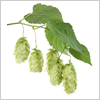
 USA: Hop acreage strung for harvest down 18% this year
USA: Hop acreage strung for harvest down 18% this year
United States hop acreage strung for harvest in 2024 is down 18 percent from 2023, according to a report issued by the United States Department of Agriculture.
Although the beer industry has been languishing over the last couple of years, the dramatic decline in American hops acreage may mark a turning point in the hops supply industry and an acknowledgement that the heady days of beer may be over — hops have few commercial uses outside of beer production.
According to Shanleigh Thomson, a 12-year veteran in the beverage alcohol industry and currently head of west coast sales for Roy Farms, a century-old hop grower, “there has been a build up of hops inventory since 2016.” Before that, there was a shortage of hops as craft beer was enjoying explosive growth.
“Because of that shortage before 2016, there was a huge push to get breweries to enter into purchasing contracts for hops,” said Thomson in a video interview, “particularly for popular proprietary hop varieties like Citra and Mosaic.” Hops suppliers began encouraging breweries to enter into three-year hops contracts and since every brewery at the time was expecting to grow, many over-contracted, leading to an over-supply of hops.
Once planted, hops take up to three years to fully produce the cones that are used in brewing, so despite years of over-supply, there was reticence to reduce acreage, even as growth in craft beer began to slow. The almost one-fifth reduction in hops acreage in 2024 appears to be the hops industry finally acknowledging that beer-industry demand will not grow to meet hops supply in the foreseeable future.
Thompson notes that much of the American hops supply is concentrated — 47.1% of acreage is controlled by two companies — and that the farmers most impacted by the decision to reduce acreage are the small farmers who had been contracted to grow hops for the major suppliers. Many of those small farmers invested in expensive equipment — specialized hop picking, cleaning and drying equipment that cannot be used for other crops — and now that they are no longer being asked to grow hops, they have been left with few options. While areas that grow hops are also good for growing apples and wine grapes, these crops take years to materialize and those industries are also facing over-supply.
“Farmers have limited options,” says Thomson.
Thomson predicts that the entire way hops are supplied may experience a shake up. Hops farmers who had been contracting with brokers may now seek to enter into supply contracts directly with brewers, bypassing growers groups and brokers, and there may be push to public hop varieties such as Cascade and Centennial, the planting of which is more directly within the farmers’ control.
Tilbage
E-malt.com, the global information source for the brewing and malting industry professionals. The bi-weekly E-malt.com Newsletters feature latest industry news, statistics in graphs and tables, world barley and malt prices, and other relevant information. Click here to get full access to E-malt.com. If you are a Castle Malting client, you can get free access to E-malt.com website and publications. Contact us for more information at marketing@castlemalting.com .





